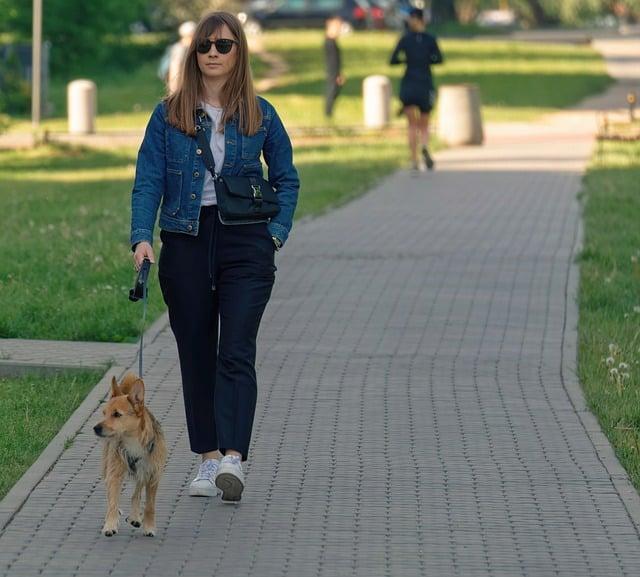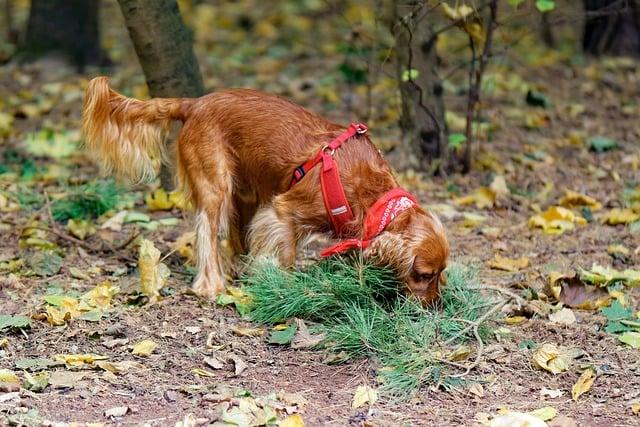Imagine a sunny afternoon in a bustling park, where a golden retriever named Max spots his owner, Sarah, from afar. With a wagging tail and a joyful bark, he races towards her, his eyes sparkling with affection. In dog language, “I love you” is not just a phrase; it’s the way he leaps into her arms, nudges her hand for a scratch, and rolls over for belly rubs. Each wag and woof conveys loyalty and devotion. Understanding this unspoken bond can deepen our connection with our furry friends, reminding us that love transcends words.
Contents
- Understanding Canine Communication and the Meaning of Affection
- Decoding Body Language: How Dogs Express Love
- Vocalizations and Sounds: The Subtle Nuances of Canine Affection
- Building a Stronger Bond: Practical Tips to Show Love to Your Dog
- Q&A
Understanding Canine Communication and the Meaning of Affection
Canine communication is a fascinating blend of body language, vocalizations, and subtle cues that convey a dog’s feelings and intentions. Understanding these signals is crucial for building a strong bond with your furry friend. Dogs may not speak our language, but they have their own ways of expressing affection that can be easily interpreted by attentive owners. By observing their behavior, we can decode what they mean when they show love.
One of the most common ways dogs express affection is through **physical closeness**. When your dog leans against you, rests their head on your lap, or follows you from room to room, they are signaling their desire for companionship and comfort. This behavior is often accompanied by a relaxed body posture, wagging tail, and soft eyes, all of which indicate a sense of safety and trust. These gestures are their way of saying, “I love being with you.”
Vocalizations also play a significant role in canine communication. While barking can sometimes indicate excitement or alertness, softer sounds like whining or gentle growls can express affection. When your dog greets you with a series of happy barks or a soft whine, they are likely expressing joy at your presence. Additionally, a dog that sighs contentedly while snuggling close is communicating their happiness and comfort in your company.
Another important aspect of canine affection is **eye contact**. When a dog gazes into your eyes, it releases oxytocin, the same hormone that fosters bonding in humans. This mutual gaze is a powerful sign of love and trust. Furthermore, dogs may also engage in playful behaviors, such as bringing you their favorite toy or initiating playtime, which are clear indicators of their affection and desire to connect with you. By recognizing and responding to these signals, you can deepen your relationship and ensure your dog feels loved and secure.
Decoding Body Language: How Dogs Express Love
Understanding how dogs communicate their affection can deepen the bond between you and your furry friend. Dogs have a rich vocabulary of body language that conveys their feelings, and recognizing these signals can help you respond to their needs and emotions. When your dog approaches you with a relaxed body posture, soft eyes, and a wagging tail, they are likely expressing their love and trust. These subtle cues are their way of saying, “I feel safe with you.”
One of the most telling signs of a dog’s affection is their tail wagging. However, it’s important to note that not all tail wags are created equal. A **slow, wide wag** often indicates happiness and contentment, while a **fast, stiff wag** might suggest excitement or agitation. Pay attention to the position of the tail as well; a tail held high and wagging enthusiastically is a clear sign of a joyful dog ready to share their love with you.
Another way dogs express their affection is through physical closeness. When your dog leans against you, rests their head on your lap, or follows you from room to room, they are demonstrating their desire for companionship. This behavior signifies that they see you as part of their pack and feel a strong emotional connection. Additionally, dogs may engage in gentle nudging or licking as a form of affection, which is their way of showing love and seeking attention.
Eye contact is also a powerful form of communication in the canine world. When your dog gazes into your eyes with a soft expression, it’s a sign of trust and love. This intimate connection releases oxytocin, the same hormone that bonds mothers and their babies. To reciprocate this affection, try maintaining eye contact with your dog during moments of play or relaxation. This simple act can strengthen your bond and enhance the love you share.
Vocalizations and Sounds: The Subtle Nuances of Canine Affection
When it comes to expressing affection, dogs have a rich vocabulary of vocalizations and sounds that often go unnoticed by their human companions. Each bark, whine, and growl can convey a spectrum of emotions, from excitement to comfort. Understanding these subtle nuances can deepen the bond between you and your furry friend, allowing you to respond to their needs more effectively. For instance, a soft whine may indicate a desire for attention, while a series of playful barks can signal joy and eagerness to engage.
Moreover, the pitch and tone of a dog’s vocalizations play a crucial role in their communication. A high-pitched yip might express happiness or playfulness, while a low growl can serve as a warning or a sign of discomfort. By paying attention to these variations, you can learn to interpret your dog’s feelings and intentions more accurately. This understanding fosters a more harmonious relationship, as you become attuned to their emotional state and can respond appropriately.
In addition to vocal sounds, dogs also use body language to enhance their vocal expressions. A wagging tail, relaxed ears, and a playful stance often accompany joyful barks, signaling a dog that is ready for fun. Conversely, a tucked tail and stiff body posture may accompany growls, indicating fear or aggression. Recognizing these combinations of vocalizations and body language can provide a clearer picture of what your dog is trying to communicate, reinforcing the idea that their love for you is expressed in a multifaceted manner.
Ultimately, fostering a deeper understanding of your dog’s vocalizations and sounds can transform your interactions. By responding to their unique ways of expressing affection, you not only strengthen your bond but also create a more fulfilling environment for both of you. Embrace the challenge of learning this canine language, and you’ll discover that your dog’s “I love you” is often found in the most unexpected sounds and gestures, waiting for you to decode their heartfelt messages.
Building a Stronger Bond: Practical Tips to Show Love to Your Dog
Understanding your dog’s unique way of expressing affection is key to strengthening your bond. Dogs communicate through body language, vocalizations, and behaviors that convey their feelings. To show your love effectively, pay attention to their signals. For instance, when your dog wags their tail, especially in a wide arc, it often indicates happiness and excitement. This simple gesture is their way of saying, “I love being with you!”
Another important aspect of canine communication is eye contact. When your dog gazes at you with soft eyes, it’s a sign of trust and affection. You can reciprocate this love by engaging in gentle eye contact, which can deepen your connection. Additionally, consider using **positive reinforcement** techniques, such as treats or praise, when your dog displays affectionate behaviors. This not only encourages them to express their love but also reinforces your bond.
Physical touch is another powerful way to convey your feelings. Dogs thrive on physical affection, so regular petting, belly rubs, and cuddles can make them feel cherished. Create a routine that includes these loving gestures, as they help your dog feel secure and valued. Moreover, engaging in interactive playtime, such as fetch or tug-of-war, can also be a fun way to show your love while strengthening your relationship.
Lastly, spending quality time together is essential. Whether it’s going for a walk, exploring new parks, or simply lounging at home, these shared experiences create lasting memories. Make it a point to include your dog in your daily activities, as this not only shows your love but also enriches their life. Remember, every moment spent together is an opportunity to express your affection and build a stronger bond with your furry friend.
Q&A
-
What does “I love you” mean in dog language?
In dog language, “I love you” is expressed through various behaviors and body language. Dogs show affection by wagging their tails, licking, cuddling, and following you around. These actions indicate trust and a strong bond with their human companions.
-
How can I tell if my dog loves me?
Signs that your dog loves you include:
- Excited greetings when you come home
- Leaning against you or sitting on your lap
- Bringing you toys or other gifts
- Making eye contact and relaxing around you
These behaviors demonstrate your dog’s affection and attachment.
-
Can dogs understand when I say “I love you”?
While dogs may not comprehend the words “I love you,” they can pick up on your tone of voice and body language. When you express love through gentle words and affection, your dog can sense your emotions and respond positively.
-
How can I express love to my dog?
To express love to your dog, consider the following:
- Spend quality time together through play and walks
- Offer treats and praise for good behavior
- Provide a comfortable and safe environment
- Engage in gentle petting and cuddling
These actions reinforce your bond and communicate your love effectively.
understanding how dogs express love can deepen our bond with them. By recognizing their unique signals, we can foster a more meaningful relationship, ensuring our furry friends feel cherished and understood. Embrace their language of love!

大家好,我是彼得潘,專業的手法身體治療師。我喜歡探索和研究各種主題,並透過與人工智慧的合作分享專業、實用、有趣的文章。我們定期進行人工審核,以確保內容的準確性。如果您發現文章中有任何不準確的地方,請隨時與我們聯繫,我們會及時糾正。您可以透過 [email protected] 與我們聯繫。



